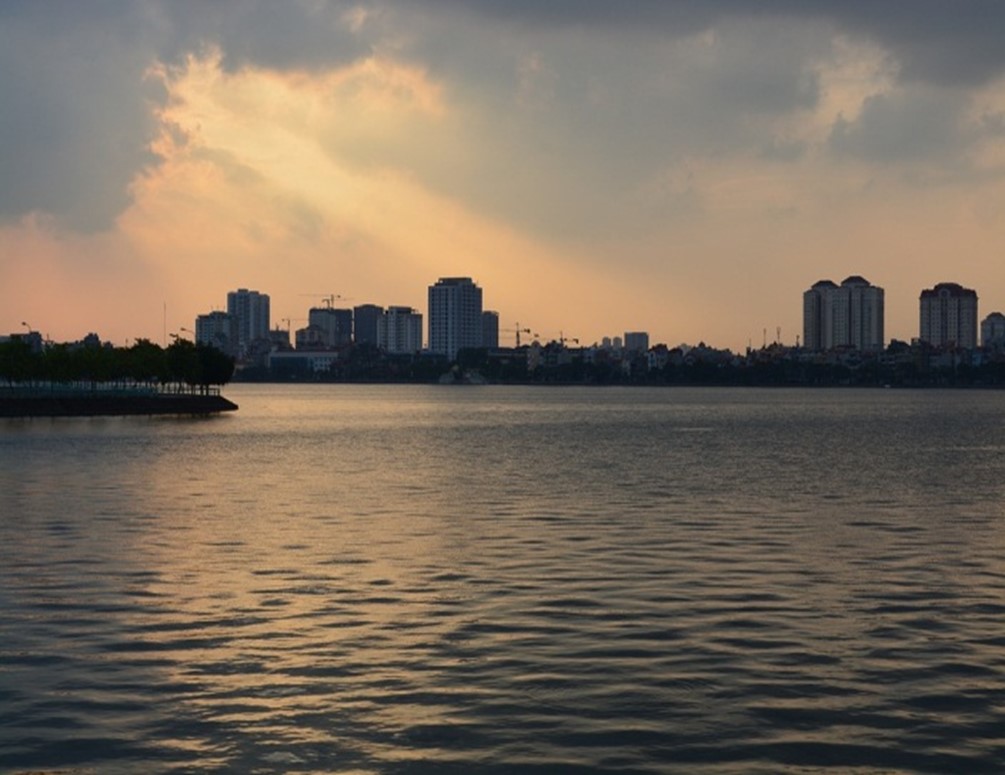CHAPTERS
Navigate to chapter
► Chapter One: Hanoi Overview
► Chapter Two: Travel Essentials
► Chapter Three: Getting In and Around Hanoi
► Chapter Four: Top 10 Hotels and Accommodations
► Chapter Five: Top 10 Dishes in Hanoi
► Chapter Six: Top 10 Tourist Spots in Hanoi
► Chapter Seven: Top 10 Shopping Places in Hanoi
► Chapter Eight: Top 10 Museums in Hanoi
► Chapter Nine: Top 10 Nightlife Destinations in Hanoi
► Chapter Ten: Off – Beaten Path in Hanoi
Chapter One: Hanoi Overview

Hanoi being the second largest metropolis in Vietnam (next to Ho Chi Minh City) has a population of around 10 million people as of this writing. The city can be found in the northern region of Vietnam and it is near the Red River delta around 56 miles away from the coastal area.
When it comes to topography, the city of Hanoi has three kinds of land terrain; delta area, midland region, and mountain zone. These terrains are slightly lower from the north going to the south, and from the west going to the east; the average height is around five to twenty meters above sea level. The mountain and hill zones are situated in the western and northern areas of the city. The highest peak in Hanoi is at 1,281 meters specifically at Ba Vi which can be found in the western area of the metropolis.
The Old Quarter as mentioned earlier is the hub of tourists from around the world. In addition to visiting landmarks and historical places, you can immerse in the Vietnamese culture once you’ve strolled along the streets and alleys of the Old Quarter. There are lots of hotels, markets, dining places, malls, bars, club, cafes and tons of street food vendors that you can sink your teeth into to taste what Hanoi has to offer. Unlike in other cities like Tokyo or LA, the Old Quarter in Hanoi is not that spread out which means everything is walking distance. Many tourists just spend around 2 days (tops) in the city before moving to the French Quarter.
You may also find that the city of Hanoi doesn’t have breathtaking skylines unlike in other Southeast Asian cities. Buildings in the metropolis are usually just five – stories tall, but you can still see towering skyscrapers if you go to Ho Chi Minh which is just a few miles away from Hanoi.
In addition to this, you may also notice that there are LOTS of motorbikes in the city (around 80% of Vietnamese use motorbikes as the main form of transportation), and crossing the street may feel like playing with death because there are no designated pedestrian lanes. This is something that most tourists find overwhelming especially if they came from the west where there are stoplights and street lanes everywhere. Don’t worry though because the drivers will just go around you, and pretty soon you’ll get the hang of it. Just walk in the same pace when crossing roads or better yet go along with other people who are also crossing the street.
During the ancient times, invading forces around the city agree on one thing: Hanoi is a great capital. According to historians, the city has held that title for many centuries. It has undergone many invasions and name changes. In 1408, Chinese conquerors sieged the Dai La which is the imperial city of Vietnam and change its name to Tong Binh. In 1428, Le Loi fought against foreign invaders and eventually changed the name of the city yet again to Le Thai To. Fast forward to 1831 during the time of the Nguyen Dynasty, the city was given the name Ha Noi. However, the power was transferred to Hue and it became Vietnam’s capital for a while until the country was invaded by French. The French officially made Hanoi the capital of Indochina. Around 1954, the city was ceded to Ho Chi Minh after a decade of fighting the French army, and Hanoi eventually became the capital of North Vietnam. It was only in 1975, when the city of Hanoi was officially declared as the capital for the whole country.
The city of Hanoi retained much of its French – influenced colonial vibe despite the various invasions and battles that befall upon it. Such conflicts made it largely untouched by modern architecture which is why most building is just five – stories high. If you want to see more French – inspired places, you can go to Hoi An where there are lots of well – preserved colonial and pre – colonial architecture that will sort of take you back in time. Many foreign expats reside in Tay Ho which is also located in the metropolis. Tay Ho is home to many English teachers, foreign restaurants, and the signature Pho dish of Vietnam.
As you walk along the bustling streets of Hanoi, you may encounter that locals try to strike up a conversation with you, that’s because it’s a norm for them to talk to strangers and may ask you general questions. This overt friendliness can be very helpful especially if you get lost but still practice caution and be alert.
Before Hanoi became known as the “Paris of the East” and before it became one of Southeast Asia’s beautifully preserved colonial – era city, it had gone through different significant events throughout history. Let’s take a look back at it:
Van Lang Dynasty
- 300 B.C.E: A region in Van Lang formed an area known as Giao Chi which is now the present – day Hanoi is situated.
- 258 B.C.E: Au Viet which is under the Shu Pan emigrant conquered Van Lang.
Au Lac Dynasty
- 257 B.C.E.: Shu Pan established Co Loa and made it the capital of Au Lac’s unified kingdom. It is the present – day Dong Anh district.
Qin Dynasty
- 214 B.C.E: The first emperor started his campaign to fight that people of the south which is also known as Baiyue.
- 208 B.C.E.: General Zhao Tuo defeats Shu Pan and took over Co Loa. General Zhao Tuo incorporated Co Loa to the Nanhai Commandery.
Nanyue Dynasty
- 204 B.C.E: General Tuo declares Nanyue as an independent kingdom.
- 196 B.C.E.: Lu Jia secures a nominal submission of the kingdom to Han
- 179 B.C.E.: The lands of the Nanyue kingdom in the Red River Valley have already been organized under the command of Giao Chi.
Han Empire
- 111 B.C.E.: The commander of Giao Chi submits to Han and remained in his post to begin the first northern domination of Vietnam.
- 208 C.E.: Long Bien erected in its eponymous district
- 226 C.E.: Roman embassy arrives
Song Dynasty
454 – 464 C.E.: Songping was established in the Hoai Duc and Tu Liem Districts by the Liu Song which is situated on the south bank of the
Continue Reading…
Want to read the entire thing?

